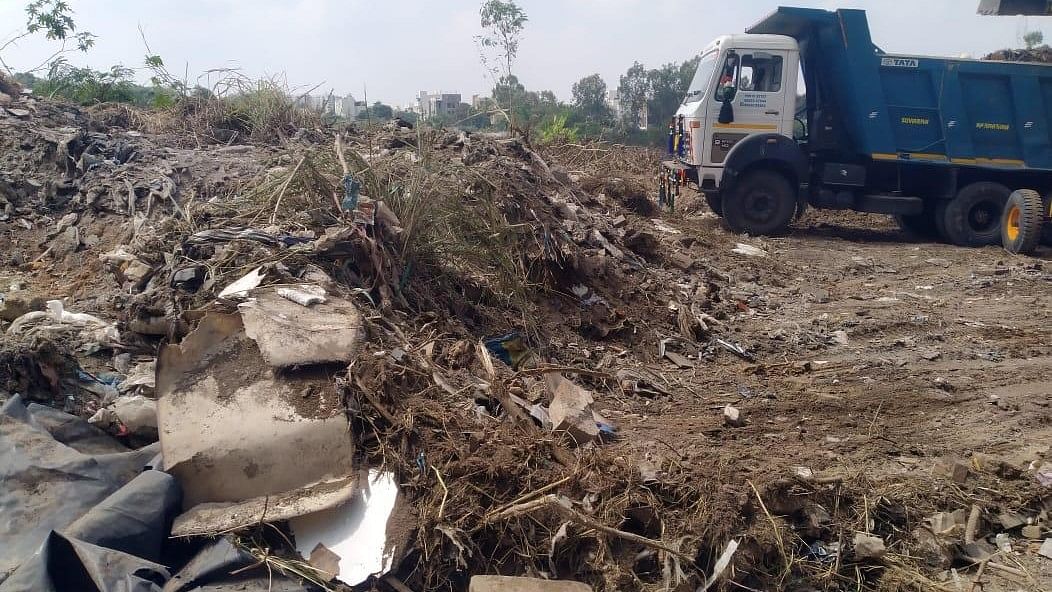
Credit: Special Arrangement
Bengaluru: A project to reclaim a barren government plot in Haralur from garbage and construction waste has transformed it into a thriving 10-acre lung space with rich biodiversity. This urban forestry model has been swiftly adopted by the police department.
In early January, HR Rajashekhar, a resident of the area, approached retired forest officer and chairman of the Bangalore Environment Trust (BET), AN Yellappa Reddy, to save the 10-acre government plot surrounded by apartments in Haralur near HSR Layout. The land, which included an abandoned quarry, had turned into a dumping ground for garbage and construction waste.
Over the next two months, more than 100 truckloads of garbage and construction waste were removed, and the land was flattened into a broad terrace to retain its undulation. Cleaning up the abandoned quarry yielded truckloads of plastic and other non-biodegradable materials.
Reddy contacted GS Jayadev of the Deenabandhu Trust in Chamarajanagar, who is dedicated to conserving native tree species.
He also roped in Ravindra TC from Indus Herbs. Children from nearby apartments and students from government schools joined hands to create an urban forest with over 5,000 saplings, which are now growing into small trees.
The landscape, once known as the ‘Dinne Anjaneya’ area, has regained its sacred grove.
“We prepared a master plan for the restoration to ensure this wouldn’t end up as another park with invasive alien plants and trees. Nearly 100 native species were chosen to create an ethno-botanical park, including a sacred grove where birds and insects are not disturbed,” Reddy said.
Reddy said that the success story of Haralur, shared at an event, impressed Bengaluru Police Commissioner B Dayananda. Shortly after, a request came from VC Gopal Reddy, Deputy Commissioner of Police, City Armed Reserve (West), to save the 10-acre wasteland behind the Chamundeshwari Police Quarters in Annapurneshwari Nagar.
“Over the last two months, we have witnessed a transformation of the landscape. The output from the sewage treatment plant in our quarters has aided the entire afforestation programme. The landscape now wears a fresh look,” the DCP said.
According to Ravindra, around 4,500 saplings and an additional thousand herbs and shrubs were planted in the area as part of a project supported by a private company. “A nutrition garden, 20 medicinal herbs such as brahmi, chakramuni, doddapatre and lemon grass, a sacred grove and essential trees including five ficus species have been planted there,” he said.
Yellappa Reddy said that the two “ethno-botanical parks” have been named after EK Janaki Ammal, the renowned botanist and field biologist who broke several glass ceilings in the early 20th century and contributed to sugarcane research in India. “More than 20 lakh trees can be planted in barren lands around Bengaluru. This will help restore the city’s air quality and improve water security. More importantly, the rich biodiversity of Bengaluru can still be saved if we act now. Instead of endlessly discussing climate change, we need action,” he said.